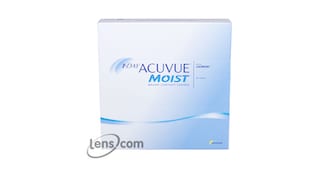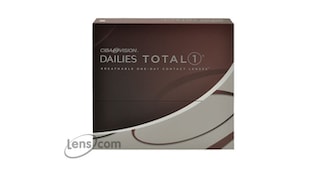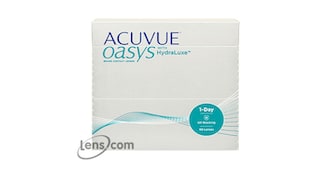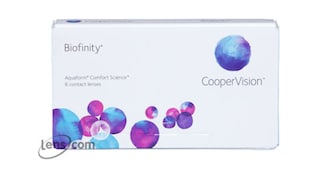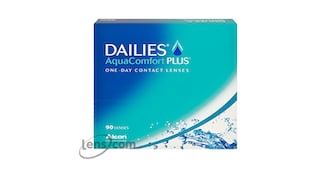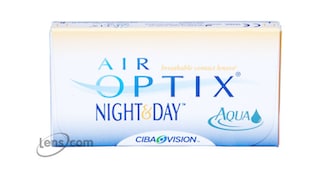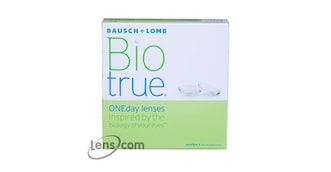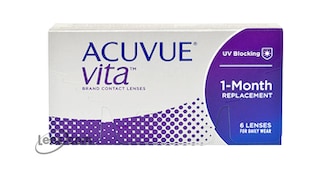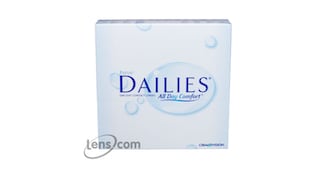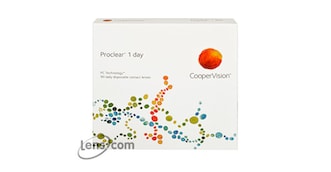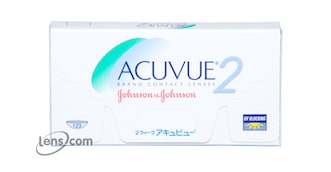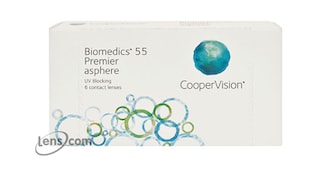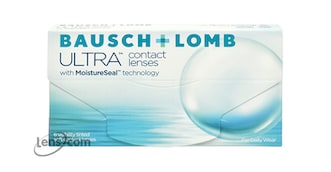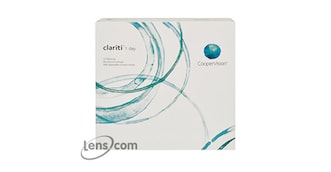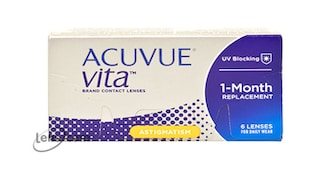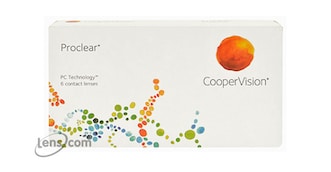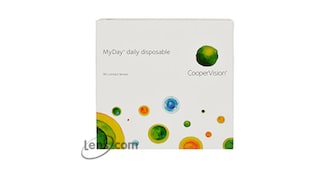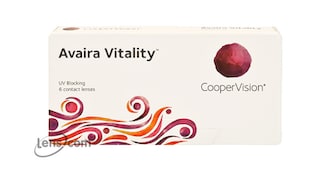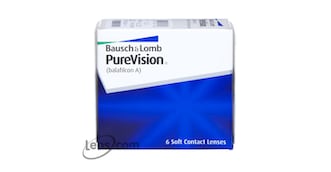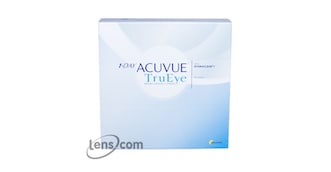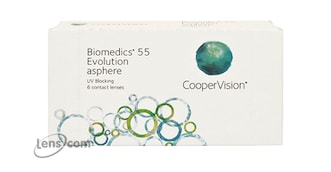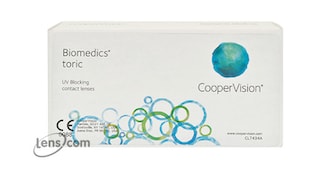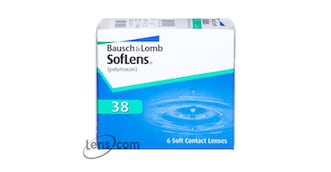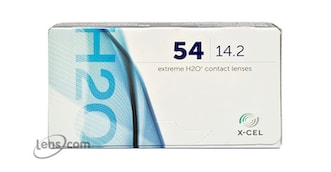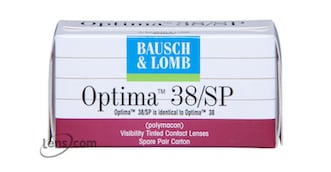Disposable Contact Lenses
“Disposable,” as defined by the United States Food and Drug Administration (FDA), means used once and discarded. With a true disposable schedule, a brand new pair of contacts is used every day.
| Most Popular Disposable Contact Lenses Contact Lenses | |||
|---|---|---|---|
| All Disposable Contact Lenses Contact Lenses | |||
|---|---|---|---|
| Disposable Contact Lenses Contact Lenses With Rebates | |||
|---|---|---|---|
See All Available Disposable Contact Lenses Rebates
| Rebates for Order Amounts | |||
|---|---|---|---|
| Disposable Contact Lenses Brand Products | 4 Boxes | 8 Boxes | |
| 1-Day Acuvue Moist 30 Pack | $85 | -- | |
| 1-Day Acuvue Moist 90 Pack | $105 | $220 | |
| 1-Day Acuvue TruEye | -- | $180 | |
| Acuvue 2 | -- | $180 | |
| Acuvue Oasys 1-Day with Hydraluxe | -- | $290 | |
| Acuvue VITA | $85 | -- | |
| Acuvue VITA for Astigmatism | $75 | -- | |
| Air Optix Night & Day Aqua | $105 | -- | |
| Avaira Vitality | -- | $160 | |
| Biofinity | $85 | -- | |
| Biomedics Toric | $75 | -- | |
| Biotrue ONEday | -- | $160 | |
| Clariti 1-Day | -- | $290 | |
| Dailies AquaComfort Plus | $135 | $290 | |
| Dailies Total 1 | $135 | $290 | |
| Extreme H2O 54% | -- | $160 | |
| Focus Dailies | -- | $160 | |
| Focus Night & Day | $105 | -- | |
| MyDay Daily Disposable | -- | $210 | |
| Optima 38 / SP | -- | $160 | |
| Proclear 1 Day | -- | $220 | |
| Proclear Compatibles | $105 | -- | |
| PureVision | $75 | -- | |
| SofLens 38 (Optima FW) | $75 | -- | |
| ULTRA | $85 | -- | |
About Disposable Contact Lenses Contacts
Disposable contacts may be worn continuously for the prescribed wearing period (e.g., 7 days to 30 days) and discarded.
Features of Disposable Contact Lenses
Traditional contact lenses can last for 6 to 12 months before they need to be replaced, and they require daily maintenance to prevent deposit buildup. Generally, these lenses are too expensive to be thrown out, which is why wearers will often put up with signs of wear and tear to get the most use out of their lenses. Today, these lenses are rarely prescribed because the benefits and affordability of disposable contact lenses have made them virtually obsolete.
Disposable contact lenses generally have a shorter lifespan than traditional contact lenses, but they require much less maintenance and are affordable enough to be replaced frequently.
Disposable contact lenses may be replaced daily, monthly, or bi-weekly. In the case of rigid gas-permeable (RGP) lenses, contacts may even be replaced yearly.
If you tend to be forgetful, suffer from allergies, or simply enjoy the feeling of fresh contacts, you’ll likely be interested in daily disposable contacts. If you don’t mind removing your contacts every night and giving them a quick cleaning, you may want to consider bi-weekly or monthly disposable lenses. Finally, if you’re concerned with the long-term consequences of throw-away products, you may want to look into annually disposable lenses.
When you go for a contact lens fitting, your eye care professional (ECP) will ask you about your lifestyle so that they can figure out which replacement schedule works best for you.
1) Daily
Daily disposable contacts, also known as dailies, are “single use.” This means you use a new pair of lenses each day. Dailies are not FDA-approved for overnight or extended wear, so you should never sleep in them.
One of the best things about these lenses is they’re less prone to deposit buildup than other types of disposable lenses. Deposits, such as proteins, lipids, and other substances naturally found in your tears, can accumulate on your contacts and make them feel less comfortable than when they were new. Deposits can also make your eyes more prone to infection. Therefore, starting every day with a fresh, clean lens is healthy for your eyes.
Aside from being healthy for your eyes, these lenses are also convenient. When you’re done wearing them, you dispose of them. This is largely why dailies are great for people with busy and highly active lifestyles.
Dailies are available in a wide range of prescriptions and lens types, including toric and multifocal. They can correct nearsightedness (myopia), farsightedness (hyperopia), presbyopia, and astigmatism.
Take note that dailies are different from daily-wear contacts. Dailies are discarded at the end of the day, while daily-wear contacts are reusable. You need to remove, clean, and store them properly before you go to sleep so that you can wear them again the next morning.
2) Monthly
Monthly disposable contact lenses, also known as monthlies, can be worn daily or for up to 30 days before they need to be discarded and replaced with a fresh pair of lenses.
These lenses are thicker than daily disposables because they’re built to last longer. As such, monthly disposable lenses are more resistant to drying out than daily disposables. Unfortunately, the thicker composition of these lenses also means you may actually feel them on your eyes. Plus, monthly disposable contact lenses need to be cleaned and disinfected every day in order to ensure safe and healthy wearing.
Because monthly disposable lenses require daily maintenance, they’re best suited for people who can adhere to a lens care routine.
Like dailies, monthlies are also available in a wide range of prescriptions and lens types. They can also correct myopia, hyperopia, presbyopia, and astigmatism.
3) Bi-weekly
Bi-weekly disposable contacts are contact lenses you replace every other week. Also known as weeklies, bi-weekly contacts offer a balance between lower maintenance and comfort. Most bi-weekly contacts still need to be taken out and cleaned nightly, but they’re designed to last longer before you need to discard them and start with a fresh pair of lenses. If daily and monthly disposables aren't the right fit for you, bi-weekly contacts may be.
Like dailies and monthlies, weeklies are available in a wide range of prescriptions and lens types. They can also correct myopia, hyperopia, presbyopia, and astigmatism.
4) Annually
Annually disposable contacts are meant to last for a full year. Therefore, they require a lot of care and commitment.
Annually disposable contacts are usually RGP lenses, which are more durable than soft lenses (hydrogel and silicone hydrogel lenses). That being said, improper handling of these lenses may result in torn contacts.
RGP lenses provide excellent vision, more so than soft lenses. However, only a few brands offer this type of contact lens, so your choices are limited.
Popular Disposable Contact Lenses
Disposable contact lenses are popular among consumers and practitioners alike for their health and convenience benefits. As such, there are many disposable contact lens brands you can choose from.
Johnson & Johnson, a trusted name in healthcare products, offers several daily disposable options under its Acuvue brand of contact lenses. Try 1-Day Acuvue Moist if you have sensitive eyes. But if you experience eye dryness due to digital device usage, Acuvue Oasys 1-Day with HydraLuxe® Technology may be a better fit for you. Alternatively, you may want to consider Dailies Total1 by Alcon. The first and only daily disposable lens to offer water gradient technology, these contacts feel like nothing on your eyes. Other popular daily disposable contact lenses include Biotrue® ONEday by Bausch + Lomb, which feature Surface Active Technology for longer hydration, and Focus® Dailies® by Alcon, which are designed for maximum comfort.
Popular bi-weekly contact lenses, on the other hand, include Acuvue 2 by Johnson & Johnson, Avaira Vitality by CooperVision, and SofLens 38 by Bausch + Lomb. All three contacts provide a healthy lens-wearing experience that people with busy and active lifestyles will love.
Meanwhile, popular monthly contacts include Biofinity by CooperVision, ULTRA by Bausch + Lomb, and Air Optix Aqua by Alcon. Any of these contacts are a great choice if you’re planning on wearing contacts frequently.
How Much Are Disposable Contact Lenses?
How often you replace your contact lenses will largely determine how much you spend on contacts every year. There are also several other factors that can increase your annual contact lens cost, such as the brand prescribed by your eye doctor, the strength of your prescription, and conditions like astigmatism. That being said, insurance coverage, manufacturer's rebates, and discounts from retailers can help reduce your annual contact lens cost.
Here’s a handy price comparison chart for your reference:
|
Replacement Schedule |
Brand |
Price At Lens.com |
|
Daily |
1-Day Acuvue Moist (90PK) |
$26.49 per box after rebate (Reg: $56.49) |
|
Dailies Total1 (90PK) |
$40.39 per box after rebate (Reg: $80.39) |
|
|
Biotrue ONEday (90PK) |
$22.79 per box after rebate (Reg: $45.29) |
|
|
Monthly |
Biofinity (6PK) |
$11.69 per box after rebate (Reg: $36.69) |
|
ULTRA (6PK) |
$16.79 per box after rebate (Reg: $41.79) |
|
|
Air Optix Aqua (6PK) |
$10.79 per box after rebate (Reg: $35.79) |
|
|
Bi-weekly |
Acuvue 2 (6PK) |
$10.49 per box after rebate (Reg: $35.49) |
|
Avaira Vitality (6PK) |
$15.49 per box after rebate (Reg: $37.99) |
|
|
SofLens 38 (6PK) |
$15.59 per box after rebate (Reg: $38.09) |
|
|
Annually |
Boston ES (1PK) |
$29.99 per box after rebate (Reg: $105.00) |
|
Optimum Comfort (1PK) |
$29.99 per box after rebate (Reg: $105.00) |
|
|
Fluoroperm 30 (1PK) |
$29.99 per box after rebate (Reg: $105.00) |
Take note that toric (for astigmatism) and multifocal (for presbyopia) contacts may cost more per box. Tinted lenses that enhance or change your natural eye color also typically cost more.
How to Insert and Remove Disposable Contact Lenses
For soft disposable lenses:
Wash and dry your hands before touching your contacts or your eyes. Scoop your first lens out of the case with the index finger of your dominant hand and rinse it with a multipurpose cleaning solution recommended by your ECP. Inspect the lens for any tears or debris. Using the middle finger of your dominant hand, pull down your lower eyelid. Stare straight ahead and gently place the lens on your eye. Blink a few times to center the lens. Repeat with the other lens.
To remove soft disposable lenses, hold your eyelids open and gently pinch the lens between your index finger and thumb. Carefully lift the lens off of your eye.
For RGP disposable lenses:
If your contacts are RGP lenses, follow the same steps for inserting soft contacts. Don’t panic if they don’t feel comfortable as soon as you put them in. RGP lenses have an adjustment period, but regular use is key for comfort. If you don’t wear your RGP contacts for several days, they may not feel comfortable right away when you put them in again. Try to be consistent with regards to how often and how long you wear them.
To remove RGP lenses, start by washing and drying your hands. For your left eye, place the index finger of your left hand at the corner of your eye and place your right hand below your eye. Stare hard at your right hand, then use your left index finger to pull your eyelid towards your ear. Blink, and the lens should easily pop out of your eye. Repeat these steps to remove the other lens.
About Lens.com
Lens.com has been proudly offering high-quality contact lenses at discount prices since 1995. Choose from a variety of our disposable contact lenses and enjoy hassle-free returns, quick shipping, and a 100% money-back satisfaction guarantee.
